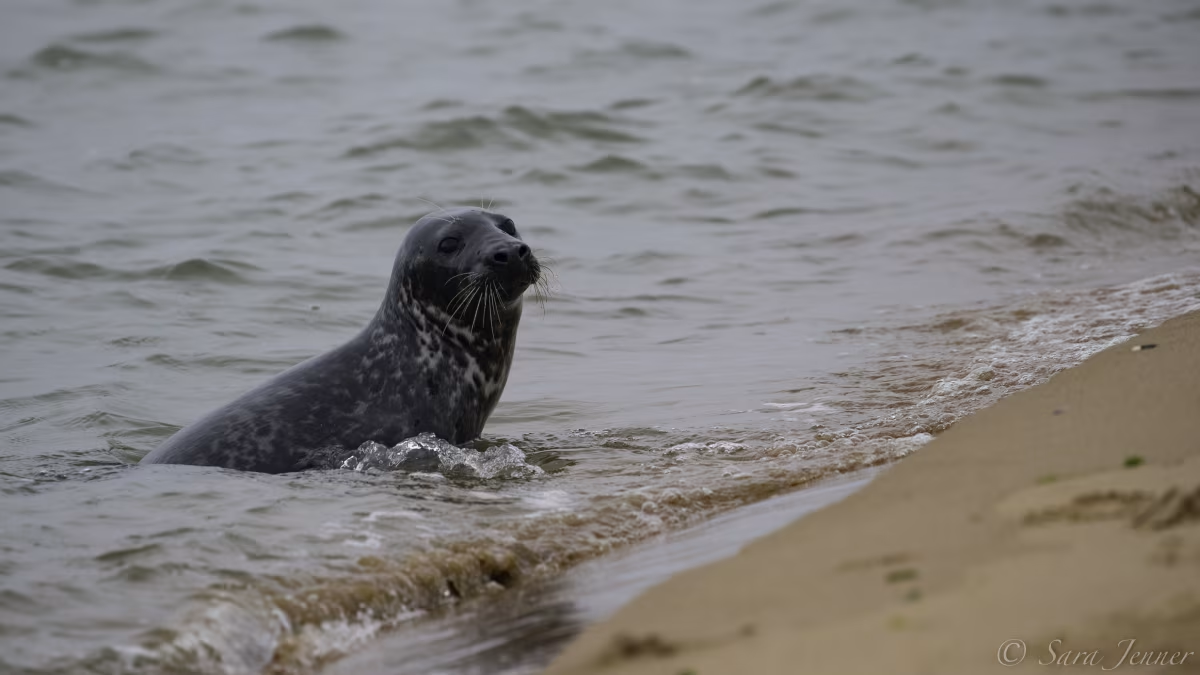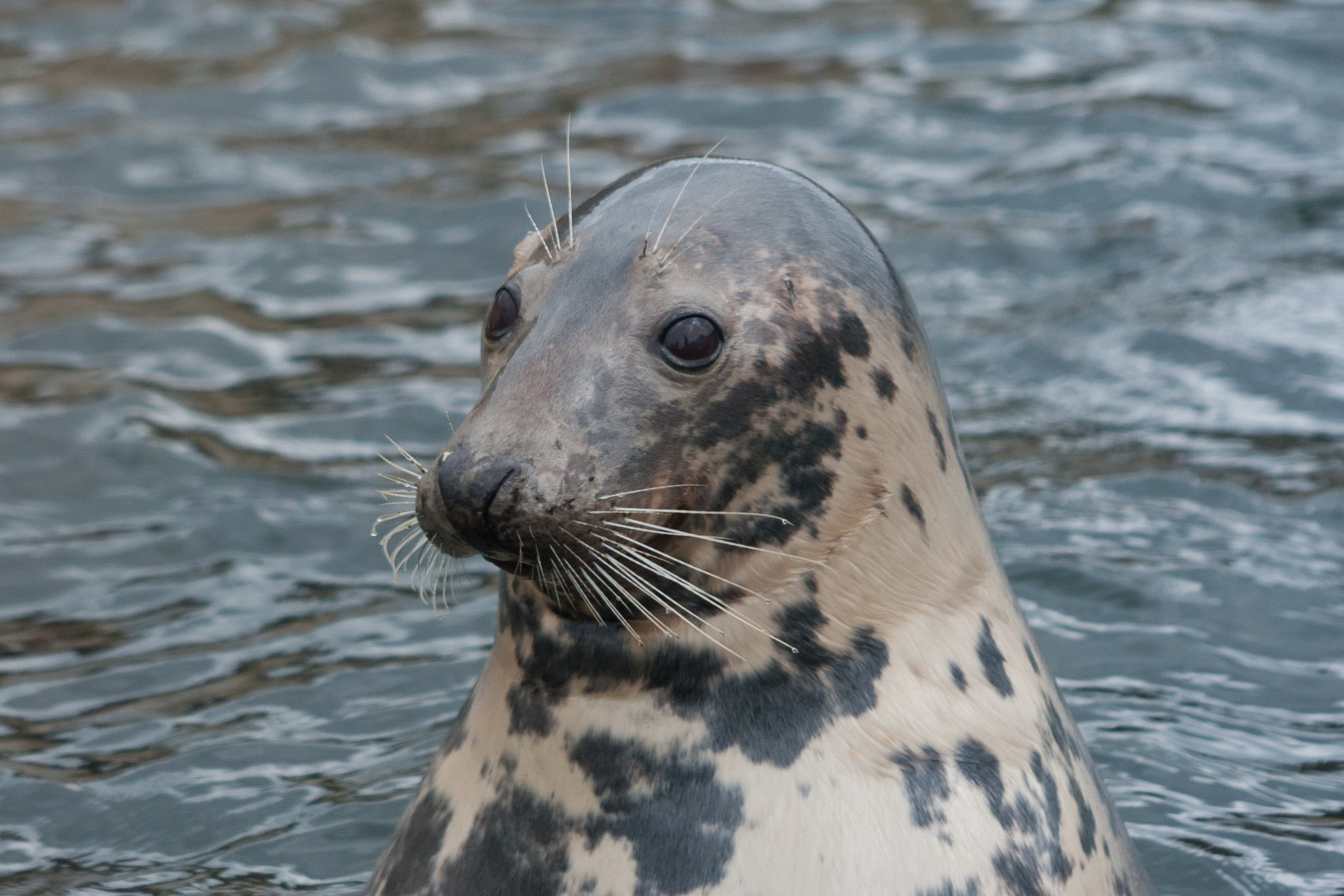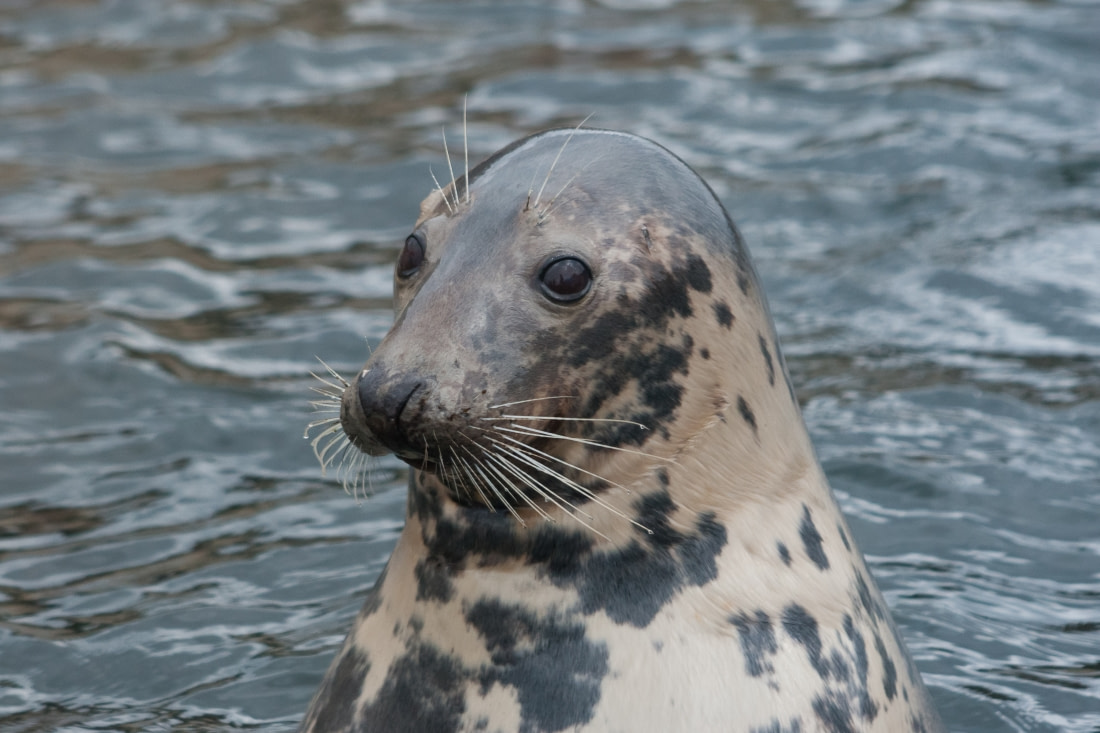Name: Grey Seal, Atlantic Seal, Horsehead Seal (Halichoerus grypus)
Length: 1.5 to 3.5 metres.
Weight: 100 to 400 kg, males being larger.
Location: Northeast coast of North America, Northwest coast of Europe.
Conservation status: Least Concern.
Diet: Fish, sand eels, octopi, lobsters, harbour seals, harbour porpoises.
Appearance: Grey or brown with white dappling, males being darker, with some males having scarring around the neck.
How do Grey Seals feed?
When fishing and foraging Grey Seals will on average dive as deep as 70 metres (though they are able to dive as far as 300 metres). Grey Seals do not necessarily eat every day, and will fast during the length of the breeding season. They will sometimes also perform what is known as “social feeding,” herding fish to make it easier to catch them.
Are Grey Seals social?
Grey Seals will “haul out” (come ashore) between hunting trips together in small groups. They form much larger groups during breeding season. The areas where they group for breeding are referred to as “rookeries.” At sea they are generally solo or in smaller groups.
How fast do Grey Seals swim?
Grey Seals have been known to burst up to speeds of around 35 kph (22 mph), but their usual speed is about 10 kph (6 mph).

What are Grey Seal birthing rituals like?
Female Grey Seals will mature sexually at about 4 years of age. Males take a little longer, maturing around 8 years of age. Both have breeding year spans of about 15 years. Males arrive at the rookeries in order to compete for mating rights over females, often scarring each other in the process. Dominant males hold sway over certain areas of the rookery (as opposed to dominating harems like other species) that can contain up to 10 females. Females come ashore pregnant from the previous season’s mating sessions.
Grey Seal pups weigh around 14 kg when born. The time of birth depends on their location – the North American pups are born around January and February whereas European pups are born from September through November. Born with soft white fur, the pups are nursed on their mother’s milk which is made up of up to 60% fat, growing to four times their birth size. During the breeding season dominant males and birthing females will stay ashore for the entire time, feeding off of their fat reserves to stay alive. This can result in fasts that last as long as 20 days for females and 50 days for males. In the space of a month the pups will grow their waterproof adult fur and head off to sea in order to learn how to provide for themselves. The females will then mate at the end of the season, ready to return the next year with another pup ready to be born.
How long do Grey Seals live?
Female grey seals live up to 35 years in the wild while males live 25 years on average.
How many Grey Seals are there today?
Estimates place the worldwide Grey Seal population at around:
- North America – 250,000
- Europe – 118,600 – 182,600
- Baltic Sea – 22,000
Do Grey Seals have any natural predators?
Grey Seals are prey to sharks and Orcas.
7 Grand Grey Seal Facts
- Grey Seals’ genus name halichoerus gryus means “hooked-nosed sea pig.”
- The Grey Seal is one of the rarest species of seal on Earth.
- Grey Seals are a member of the “true seals” family phocidae. They are also known as “earless seals.”
- Grey Seals are protected in the United States by the Marine Mammal Protection Act.
- While in open waters Grey Seals will rest with their bodies upright and their heads above the water, looking somewhat like buoys.
- Male Grey Seals can grow to be almost twice the size of females.
- The Grey Seal is the largest existing carnivorous mammal in Britain.



